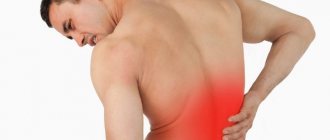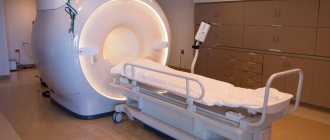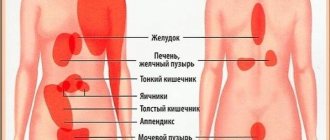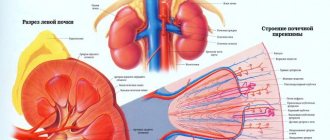It is almost impossible to miss how much your kidneys hurt, since the symptoms in women disrupt the usual rhythm of life and interfere with normal life activities. Signs indicate kidney disease, which manifests itself at different ages. The diagnosis is determined by the attending physician after examining the patient, determining the location of the spasms and the existing symptoms. Ladies more often suffer from pain in the lower back, due to the structure of the reproductive system: the urethra is wide and short, which makes it easier for infections to enter the female body.
How to determine kidney pain
Painful spasms in diseases of the reproductive system are localized in the organ area, lower back, under the lower ribs. The nature of the pain is aching, sharp, pulling, dull. The difficulty lies in determining the localization of spasms: from the kidneys, back. Unpleasant sensations of the urinary system manifest themselves in women as follows:
- the spasm is concentrated more often in 1 side;
- after anti-inflammatory drugs, pain persists;
- changing position does not reduce the intensity of the spasm;
- tapping on the organ provokes painful sensations inside.
Signs of kidney disease
More often, pain in the kidney area indicates an inflammatory process and diseases of the body. The main reasons contributing to pain and the development of diseases:
- hypothermia;
- lack of hygiene;
- penetration of infection;
- appendicitis;
- incorrect position of the uterus;
- ectopic pregnancy;
- pinched nerve;
- diseases of the digestive system.
Pain in the kidneys occurs not only due to diseases of the reproductive system; diseases associated with other organs can provoke spasms.
Appearance of the disease
There are a large number of kidney pathologies, one of the signs of which is the appearance of pain on the right side of the lower back. They look like this:
- Pyelonephritis , which can affect one or both organs at the same time. The disease is an inflammatory process caused by pathogenic microorganisms. Pyelonephritis can affect all structures of the kidney and is more often diagnosed in females.
- Prolapse of the kidney (nephroptosis) is also manifested by pain. This pathology is more common on the right side, since the liver is located higher, putting pressure on the organ.
- Severe pain in the right kidney may occur due to urolithiasis . The movement of the stone leads to damage to organ tissue. This causes the appearance of intense pain at the site of the projection of the right kidney.
As a result of urolithiasis, an organ abscess (pyonephrosis) can form, which is characterized by the accumulation of pus and pronounced clinical symptoms of the pathology, namely:
- Tumor processes and cystic formations can also lead to the appearance of this syndrome. The formations gradually grow, and compression of the nerve endings occurs, which provokes pain.
- Various traumatic lesions of the lower back lead to bruising of the kidney and are accompanied by severe pain.
- A disease such as hydronephrosis provokes atrophic changes in this organ and the occurrence of this symptom.
- In very rare cases, the cause of pain in the right kidney is parasitic diseases .
What causes a spasm of the urinary system?
If you have pain in the kidneys, it is difficult to determine the diagnosis yourself; this is done by the doctor. Spasms in different parts of the back are a common symptom; distinctive symptoms indicate diagnoses:
- Arterial thrombosis. A common condition in girls, manifested by fever, sharp pain, and discomfort when pressing.
- Cyst. The disease occurs in women over 40 years of age, in which the size of the organ increases. Spasms increase with heavy lifting, bending, and sudden movements. The pain extends to the bladder.
- Glomerulonephritis. Manifested by lower back pain, nausea, diarrhea, increased temperature, pressure, swelling, drowsiness, headache. A distinctive feature is a change in the shade of urine - the urine becomes reddish, cloudy, and white flakes are present.
- Pyelonephritis. A distinctive feature is a sharp increase in temperature. Additional symptoms: weakness, loose stools, nausea, headaches, change in urine color, sweating, frequent urge to urinate.
- Urolithiasis disease. When kidney stones move, unbearable pain occurs that does not go away when changing position to the right or left. The patient’s well-being deteriorates sharply, and the outflow of urine is disrupted. Spasms radiate to the back, lower back, and leg on the side of the diseased organ.
- Tumors. A serious disease that can be benign or malignant. At the first stage of the disease, the spasms are aching, gradually increasing in intensity. The patient has a usual temperature of 37 degrees, which rarely decreases. The patient loses his appetite and loses weight before his eyes.
- Nephroptosis. Ladies go on diets more often than men. The consequence of this is the mobility of the organ when it cannot be fixed in one position.
Physiological causes of kidney spasms
Sometimes pain in the kidneys occurs for physiological reasons and does not require treatment. Main factors:
- Kidney overload. You need to drink about 2 liters of liquid; excessive amounts are undesirable for the body. The glomerular apparatus does not have enough time to filter the fluid, and the phenomenon is accompanied by unpleasant pain.
- Strong physical activity. The speed of blood flow increases with excessive loads, which negatively affects the functioning of the body and kidneys.
- Pregnancy. In the 1st and 3rd trimester, the size of the uterus increases, which causes compression of neighboring organs.
Indirect reasons

Poor nutrition
Improper nutrition may be the cause of kidney disease. It is difficult for the excretory system to cope with excess salt, sugar, and alcohol in the diet. Stale foods also cause difficulty in digestion, as they contain many harmful substances. Protein must be excreted from the body; this responsibility falls on the kidneys. Protein breakdown products that are not excreted in a timely manner will form into stones. Excessive consumption of salty or sweet foods leads to changes in the balance of water and salts. A complete abstinence from salt is impossible; the body also needs it; without it, kidney failure can develop.
Another indirect reason is sudden weight loss. Each kidney is located in a kind of fat capsule, which protects it and maintains it at a certain level inside the body. Diets aimed at burning fat “expose” these important organs of the excretory system, depriving them of comfortable working conditions.
Drinking large quantities of alcoholic and weak alcoholic drinks has a serious effect on the functioning of the kidneys. They need to break down and then remove the harmful components of even beer and cocktails. Alcohol has an unpleasant quality - it dehydrates the body. First, an increased volume of fluid is passed through the kidneys, because the body seeks to quickly get rid of toxic substances, giving away all its moisture reserves. Then water deficiency occurs, as a result the blood becomes thick and more difficult to filter.

Alcohol
Constipation can also cause kidney disease. Feces that are not able to pass naturally begin to rot. Toxic substances, along with all of them, will be absorbed through the intestinal walls into the blood. This means that they will again continue their journey through the kidneys, perhaps more than once. This can lead to infection.
Exposure to heat and cold can also cause kidney disease. When there is intense heat, increased sweating occurs, a lack of fluid is felt in the body, which disrupts the balance of water and salts. The blood thickens, making it harder for the kidneys to filter it. At low temperatures, a reflex spasm of blood and lymphatic vessels occurs. This makes it difficult for the entire excretory system to function.
Recommended topic:
Kidneys hurt with cystitis
The next reason is overwork, excessive physical exertion, and moral experiences that weaken the body’s defenses. Any infection reaches all internal organs through the blood. But it is the excretory system that will fight it. Before the filtered pathogenic microflora is removed from the body, it remains in the kidneys for some time. Sometimes this is enough for the organ itself to become infected.
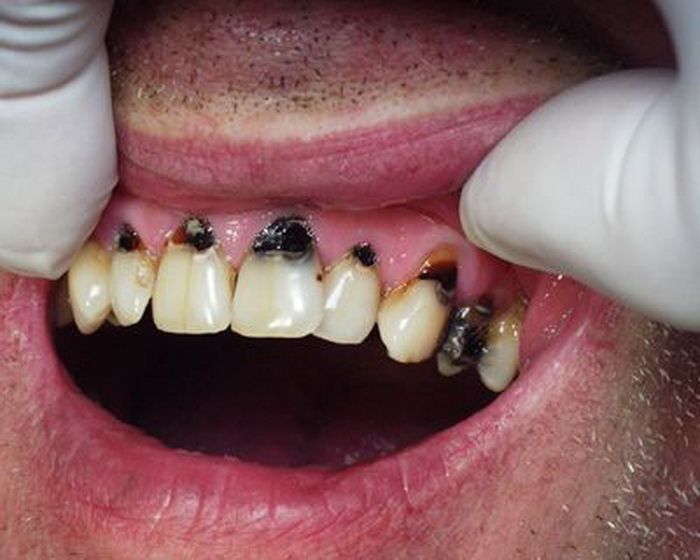
Caries
Another reason will be illnesses that are not fully treated. Caries is considered especially harmful to the kidneys. A person constantly swallows large amounts of toxins from damaged teeth through saliva. The kidneys have to clean out this toxic mixture around the clock.
Associated symptoms of kidney pain in women
Spasms of the urethra occur more often in women than in men due to the structure of the internal organs. Pain is the main symptom indicating diseases of the reproductive system. Additional symptoms, in addition to kidney pain in women, are:
- signs of intoxication (decreased appetite, malaise, fever);
- disturbance of urination (pain when going to the toilet, sediment and non-specific shade of biological fluid, frequent urge to urinate, burning sensation when emptying the bladder, changes in the daily volume of urine);
- redness, enlargement of the organ;
- swelling on the face, which eventually spreads to other organs.
Advice! If you don’t know which doctor to see if you have kidney pain, you can visit a general practitioner who can refer you to a doctor with a specific specialty. Urologists and nephrologists deal with kidney diseases.
Kidney diseases
There are many kidney diseases that are accompanied by various symptoms: pyelonephritis, glomerulonephritis, urolithiasis, kidney prolapse, hydronephrosis, renal failure, polycystic disease, nephropathy of pregnancy, cancer.
However, lower back pain and frequent urination are not always signs of kidney disease in women. In older women, such symptoms may indicate diseases of the musculoskeletal system, impaired elasticity of cartilage tissue.
Lower back pain can be a result of an ectopic pregnancy or high fetal pressure on the kidneys during pregnancy. Also, pain in the lower back often occurs during menstruation. To distinguish the signs of kidney disease from the listed diseases, you need to know what manifestations they have.
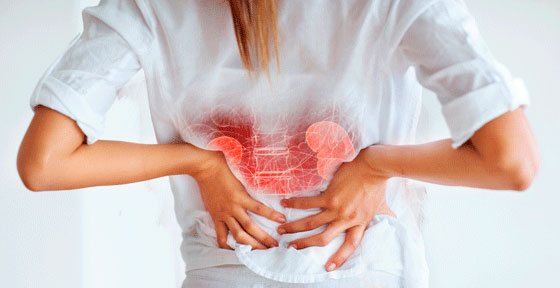
Pyelonephritis
Pyelonephritis is an inflammatory kidney disease that affects the pyelocaliceal system. The pathology is characterized by a violation of the process of accumulation and separation of urine. The main reason for the development of pyelonephritis is the development of a virus, infection or fungus in the kidney, which penetrates it through the blood, lymph or through the lower parts of the urinary organs.
Signs of kidney inflammation:
- pain in the lumbar back;
- increased urge to urinate;
- the appearance of pain during urination;
- the color of the urine changes, it becomes cloudy, sediment or foam may appear;
- temperature rise as with other viral and infectious diseases;
- the appearance of weakness, fatigue, constant desire to sleep;
- Gastrointestinal disorders (vomiting, diarrhea, flatulence).
Diagnostics
If minor pain occurs, you should consult a doctor and undergo diagnostics. Methods for identifying diseases are:
- Ultrasound;
- UAC, OAM
- urine analysis according to Nechiporenko;
- biochemical urine analysis;
- urography;
- urine culture.
If the diagnosis is not determined based on the test results, an MRI and CT scan of the kidneys with a contrast agent are performed. Diagnosis of pyelonephritis and other diseases should be carried out in a timely manner.
Kidney pain in a woman often indicates diseases of different stages. At the first painful symptoms, you must consult a doctor, undergo an examination, and begin treatment if the disease is detected. Self-medication aggravates the course of the disease, the diagnosis develops into the next stage, developing complications.
